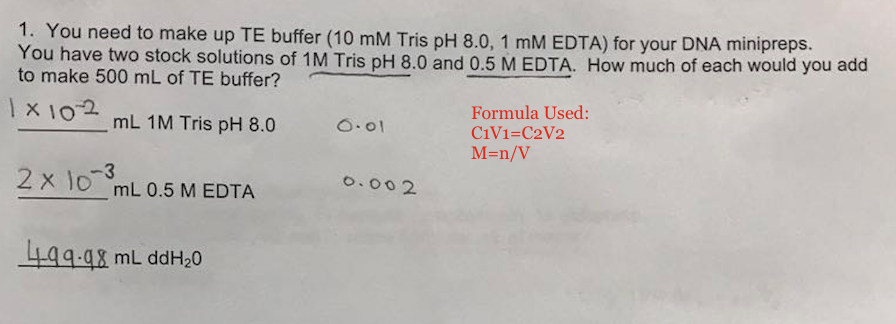
The operation of the TE buffer is based on chelating metal cations such as Mg 2+. Repeated freeze-thaw cycles should be avoided. Genomic and plasmid DNA can be stored in TE Buffer at 4 ☌ (39.2 ☏) for short-term use, or -20 ☌ (-4 ☏) to -80 ☌ (-112 ☏) for long-term storage. ĮDTA further inactivates DNase, by binding to metal cations required by this enzyme. The respective DNA and RNA nucleases are supposed to be less active at these pH values, but pH 8.0 can safely be used for storage of both DNA and RNA. Add microliter amounts of high molarity HCl to lower the pH to 8.īased on nuclease studies from the 1980s, the pH is usually adjusted to 7.5 for RNA and 8.0 for DNA. To make a 100 ml solution of T 10E 1 Buffer, 1 ml of 1 M Tris base (pH 10–11) and 0.2 ml EDTA (0.5 M) are mixed and made up with double distilled water up to 100ml. TE buffer is also called as T 10E 1 Buffer, and read as "T ten E one buffer". The purpose of TE buffer is to solubilize DNA or RNA, while protecting it from degradation.Ī typical recipe for making 1X TE buffer is: "TE" is derived from its components: Tris, a common pH buffer, and EDTA, a molecule that chelates cations like Mg 2+.

TE buffer is a commonly used buffer solution in molecular biology, especially in procedures involving DNA, cDNA or RNA.

Buffer solution used in molecular biology


 0 kommentar(er)
0 kommentar(er)
